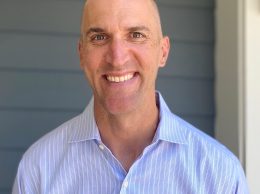By Matthew Fienup
While the CDC is recommending face masks, the Federal Reserve is imposing blinders.
Long before 40 million people filed unemployment claims as a result of government-mandated closures, indeed before any of us had even heard of COVID-19, U.S. monetary policy was already on crisis footing.
The Federal Reserve failed to unwind extraordinary interventions undertaken following the 2008-2009 financial crisis, including ultralow interest rates, interest paid on bank reserves, and a distended Federal Reserve balance sheet. What the Fed claimed at the time were temporary interventions necessitated by the crisis proved impossible to unwind. As a result, monetary policymakers had exhausted conventional tools before we even knew that the current crisis was upon us.
Given its stance early in the pandemic, the Fed quickly dispensed with any restraint on its balance sheet. Fed President Neel Kashkari summarized the Fed’s new disposition when he bragged, “There is an infinite amount of money in the Federal Reserve.” As of today, the Fed has spent what feels like a nearly infinite amount, acquiring $7.1 trillion of assets. This is forecast to reach up to $11 trillion by year’s end — a level nearly 2.5 times the record set during the last crisis.
The Fed then turned to a new round of unprecedented, poorly understood and impossible-to-unwind interventions. The Fed dispensed with merely being lender of last resort and chose to become the direct lender of choice, extending credit to businesses as well as state and local governments. This broke a century-old taboo about whom the Fed would interact with. In doing so, the Fed has not only underwritten previously unimaginable government debt, but also essentially guaranteed every major U.S. company.
The moral hazard introduced by this is terrifying. We echo investment director Howard Marks, who wrote, “Markets work best when there is a healthy fear of loss. Capitalism without bankruptcy is like Catholicism without hell.” We would add, “if we care to learn anything from 2008-2009.”
Now, the Fed is floating an idea that is even crazier. The latest invention is “Yield Curve Control.” This refers to setting explicit targets for yields on short-, medium- and long-term securities and then purchasing large quantities in order to move the market to the target. Apparently, the Fed wants to dictate the return on investments all the way from four-week T-bills to 30-year mortgages. Never mind that the relationship between returns on different maturities has always been a critical source of information about liquidity, risk and the overall economic outlook. The current crisis apparently necessitates breaking the link between the yield curve and these economic fundamentals.
Nothing to see here.
We shouldn’t be surprised that the Fed wants to put blinders over the eyes of every private and institutional investor. Its fingerprints are all over the dramatic disconnect between stock prices and economic fundamentals.
Consider these extraordinary gyrations: Between December 2018 and February 2020, the S&P 500 grew 44 percent but between Feb. 19 and March 23 of 2020, the index dropped 33 percent. Then, between March 23 and June 1, it staged a stunning rebound, increasing 37 percent.
In the interim, the Dow suffered a bear market that lasted only 15 days, the shortest on record and only one-sixth the previous record. In each case, the dramatic reversal was not driven by fundamental changes in the economy.
In fact, the link between fundamentals and stock prices, if one exists, seems to be reversed. Recall that 40 million people became unemployed while the stock market grew 37 percent. No, the dramatic increase from March 23 until now is a Fed-induced distortion.
The dramatic rise in prices since at least 2016 has been stoked by the Fed’s policy of ultralow interest rates. The lack of a real positive return on safe investments has driven investors into stocks, in search of yield. This was the Fed’s explicit, and we would say myopic, intention. Chairman Jerome Powell has been surprisingly honest about this.
Investors celebrating the most recent market rally should take notice — the Fed is already distorting price signals and intends to do more.
While the pandemic demands widespread use of masks and other PPE, wearing blinders will only precipitate the next and perhaps even bigger crisis.
• Matthew Fienup is the executive director of the Center for Economic Research and Forecasting at California Lutheran University.






 Print
Print Email
Email

















